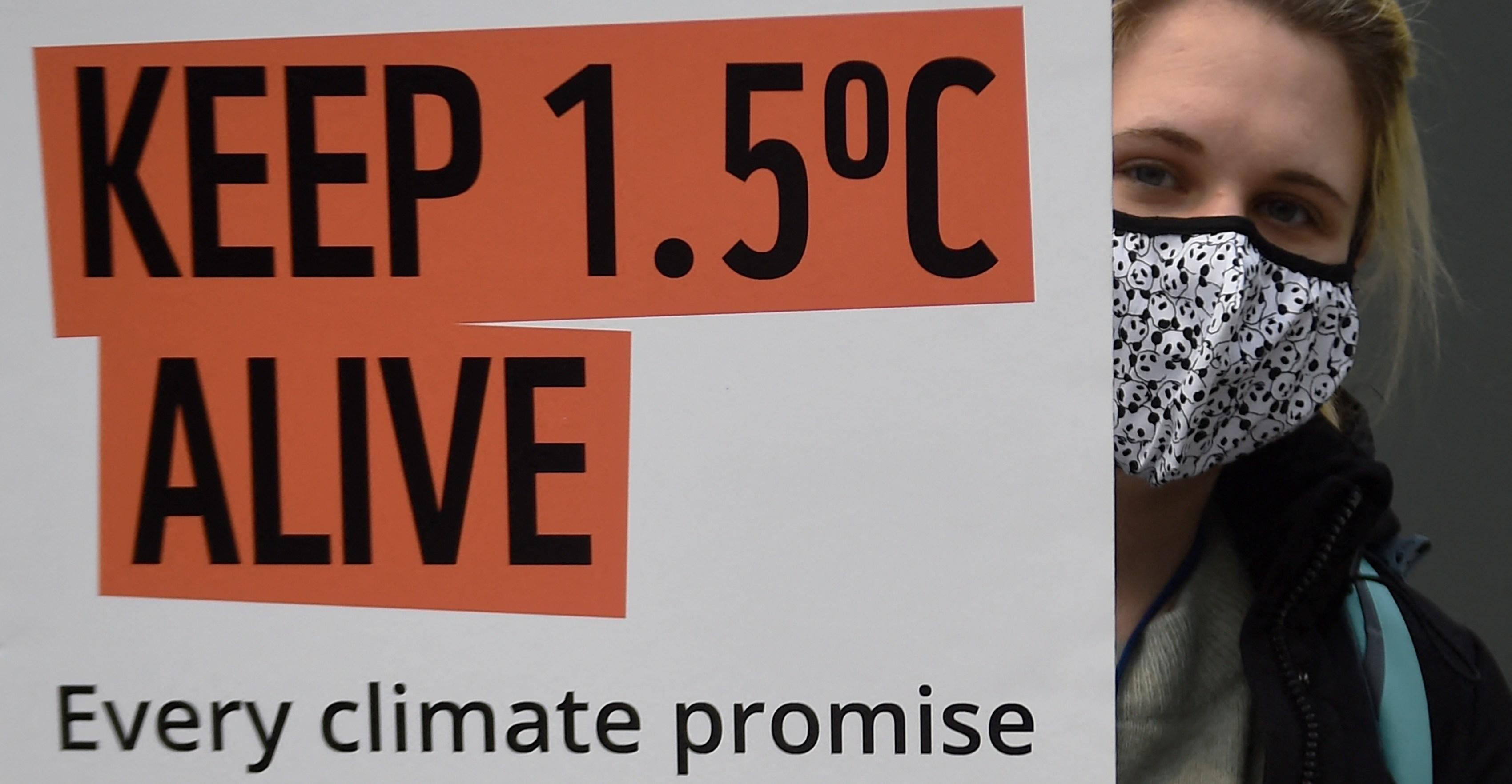Tyson Foods says it can make its burgers “climate-friendly.” It refuses to explain how.


One species accounts for around 10 percent of all global greenhouse gas emissions: the cow.
Every few months, like clockwork, environmental scientists publish a new report on how we can’t limit planetary warming if people in rich countries don’t eat fewer cows and other animals. But meat giant Tyson Foods, in conjunction with the United States Department of Agriculture (USDA), has a different solution: “climate-friendly” beef.
Tyson claims that its new “Climate-Smart Beef” program, to be supported with taxpayer dollars, has managed to cut 10 percent of the greenhouse gas emissions from a tiny fraction of its cattle herd. Those cattle are then slaughtered and sold under the company’s Brazen Beef brand with a USDA-approved “climate-friendly” label, which is now for sale in limited quantities but could soon land in your local supermarket’s meat aisle.
It sounds nice — Americans could continue to eat nearly 60 pounds of beef annually while the world burns. But it’s just the latest salvo in the meat industry’s escalating war against climate science, and its campaign to greenwash its way out of the fight for a livable planet.
Show me the math
Tyson’s climate-friendly beef website is full of earnest marketing phrases like this one: “If we’re showing up for the climate, then we’ve got to show our work.” Yet that “work” is nowhere to be found.
Despite requests for transparency from scientists and dogged journalists, Tyson and the USDA haven’t opened up their emissions ledgers, so the program remains a black box.
Tyson and consulting firm Deloitte, which worked on Tyson’s program, both declined interview requests for this story. Where Food Comes From, a private company that audits food labels for animal welfare, safety, and sustainability claims — including Tyson’s “climate-friendly” label — did not respond to an interview request.
When asked to see Tyson’s environmental accounting model, the USDA said I’d need to submit a Freedom of Information Act (FOIA) request.
Tyson also worked with environmental nonprofit juggernauts The Nature Conservancy and Environmental Defense Fund to develop its Climate-Smart Beef program, which the company touts on its website and in advertisements. Both organizations declined interview requests for this story. Environmental Defense Fund said in an email that it integrated its nitrogen emissions model into Tyson’s environmental accounting, while The Nature Conservancy noted that it reviewed and provided recommendations on data used in Tyson’s model but wasn’t otherwise involved in its Climate-Smart Beef program.
So what exactly does Tyson say its ranchers and farmers are doing to achieve a 10 percent emissions reduction? We can look to their website to get a vague sense, but it helps to first understand how cattle pollute the planet.
The 1.5 billion cows farmed worldwide for cheeseburgers and ice cream sundaes each year accelerate climate change in three main ways: they eat grass and/or grain, like corn and soy, causing them to burp out the highly potent greenhouse gas methane; they poop a lot, which releases the even more potent nitrous oxide, as does the synthetic fertilizer used to grow the grain they’re fed; and they take up a lot of land — a quarter of the planet is occupied by grazing livestock, some of which could be used to absorb carbon from the atmosphere if it weren’t deforested for meat production.
:no_upscale()/cdn.vox-cdn.com/uploads/chorus_asset/file/24904495/GettyImages_1241296900.jpg)
To achieve a 10 percent emissions reduction, Tyson’s website mentions that grain farmers who supply feed to its cows employ practices like planting cover crops and reduced tillage, which are good for soil health but haven’t been proven to cut emissions. There’s also mention of “nutrient management,” which usually means reducing fertilizer over-application, but no details on emissions savings are provided.
Among other practices, Tyson also lists “pasture rotation,” which entails moving cattle around more frequently with the goal of allowing grass to regrow, which can provide a number of environmental benefits, but many climate scientists are skeptical it can meaningfully reduce emissions. Tyson’s site also mentions improved manure management, which can reduce emissions, but only slightly.
Matthew Hayek, an assistant professor of environmental studies at New York University who’s written about Tyson’s climate-friendly beef label, told me the methods Tyson is talking about are admirable, but that doesn’t mean the 10 percent reduction claim is justified. Some practices may be good for land stewardship but don’t reduce emissions. For those that can reduce emissions, savings will be marginal.
“These are razor-thin distinctions in a country that already produces meat incredibly efficiently, and our tools are not cut out [to measure] these thin margins,” Hayek said. “You can’t call that [climate-friendly], in any good conscience.”
And because emissions from US cattle operations vary widely, “There’s simply no reliable way to estimate a change in greenhouse gas emissions as small as 10 percent on any one farm — let alone a complex network of them,” Hayek and political economist Jan Dutkiewicz wrote in the New Republic this week.
Tyson’s claims are brazen but unsurprising given how the USDA collaborates with industry. When it comes to animal welfare claims on meat packages, for example, the USDA more or less allows meat producers to operate on an honor system.
Just as important as showing its math is knowing where the starting line for emissions reduction begins. Tyson says it has reduced the carbon footprint of some of its beef by 10 percent, but 10 percent relative to what? What’s the benchmark?
Nobody knows. A 2019 study by the USDA’s Agricultural Research Service and the National Cattlemen’s Beef Association found that the average American steer emits 21.3 kilograms of carbon dioxide-equivalent emissions per kilogram of carcass weight. But in 2021, the USDA approved a low-carbon beef program (unrelated to Tyson) that uses a benchmark nearly 25 percent higher than the 2019 study, as noted by Wired last year.
When asked what benchmark the USDA uses to approve a 10 percent emissions reduction claim, the agency again said I would need to file a FOIA request, and didn’t answer questions about its verification process in time for the deadline for this story.
But even if we give Tyson and the USDA the benefit of the doubt, there’s a stubborn truth about beef: It’s so high in emissions that it can never really be “climate-friendly.”
:no_upscale()/cdn.vox-cdn.com/uploads/chorus_asset/file/24904517/GettyImages_1074353738.jpg)
To be sure, the US beef industry has reduced its emissions over the years, and it’s much lower than most countries. But relative to every other food product, beef remains the coal of the food sector.
“Beef is always going to be and always will be the worst [food] choice for the climate,” said Scott Faber of the nonprofit Environmental Working Group, which has petitioned the USDA to prohibit “climate-friendly” claims on beef products. “And no amount of wishful thinking is going to change that.”
What Tyson’s done here is equivalent to making a Hummer 10 percent more fuel-efficient and calling it climate-friendly — it’s greenwashing, and surveys show that most consumers know far too little about food and climate change to navigate this brave new world of so-called “climate-friendly” meat.
Consumers will be deceived by “climate-friendly” meat claims
Meat and dairy production account for at least 14.5 percent of global greenhouse gas emissions, leading many environmental scientists to conclude that eating more plant-based meals is one of the best actions people can take to fight climate change, and that governments could do much more to steer us in that direction. But the message hasn’t broken through to the general public, nor to policymakers.
In a recent online survey, conducted in partnership with market research consultancy firm Humantel, Vox polled consumers about which parts of the food sector they think contribute most to climate change. Meat and dairy production came in dead last, even though it’s the top contributor in the list.
:no_upscale()/cdn.vox-cdn.com/uploads/chorus_asset/file/24904592/d0lfs_within_the_food_industry_which_of_the_following_contributes_to_worsening_climate_change___1_.png)
In another question, “what we eat” was (incorrectly) ranked as a smaller contributor to extreme weather than refrigerant chemicals, single-use plastics, and air travel.
:no_upscale()/cdn.vox-cdn.com/uploads/chorus_asset/file/24904606/qpapc_how_much_do_you_personally_think_extreme_weather_is_caused_by_the_following___1_.png)
Most respondents did rank plant-based meat alternatives as more climate-friendly than beef by a decent margin. However, plant-based meat and grass-fed beef were almost tied, even though plant-based meat has a drastically smaller carbon footprint (and grass-fed beef is generally worse for the climate than conventional beef).
:no_upscale()/cdn.vox-cdn.com/uploads/chorus_asset/file/24904602/56z4T_how_much_do_you_think_the_following_foods_are_climate_friendly___1_.png)
Other recent surveys have found similar results, demonstrating Americans’ limited understanding of emissions from the food system. Throw “climate-friendly” beef into the mix and consumers are sure to be misled and possibly persuaded that beef can indeed be good for the climate.
Cashing in on consumers’ desire to shop more sustainably — and their misunderstanding of what actually makes food sustainable — could lead to more of what Tyson wants: increased beef consumption after decades of decline and stagnation. That would be a disaster for the climate at a time when the window to act is closing.
The USDA and government agencies around the world know what must be done to slash food emissions. Now they just need to follow the science, resist industry greenwashing, and cut back on the burgers.
A version of this story was initially published in the Future Perfect newsletter. Sign up here to subscribe!

Mayor emphasises importance of waste-to-energy projects for Karachi
- 15 گھنٹے قبل

The mass shooting on Australia’s Bondi Beach, briefly explained
- 7 گھنٹے قبل
25% Decline in foreign investment in Pakistan:State bank report
- 17 گھنٹے قبل
Browns LB Bush found not guilty in assault trial
- 21 گھنٹے قبل

Bungie’s delayed shooter Marathon launches in March
- 9 گھنٹے قبل

Who is Picea Robotics, Roomba’s new owner?
- 9 گھنٹے قبل

We’re passing a dangerous global warming threshold — but we’re not doomed
- 7 گھنٹے قبل

The looming showdown over IVF, explained
- 7 گھنٹے قبل

Trump is recruiting Big Tech workers for the government
- 9 گھنٹے قبل

The unexpected link between your diet and your anxiety
- 7 گھنٹے قبل

LG enters the RGB LED fray in 2026 with the Micro RGB evo TV
- 9 گھنٹے قبل

The PS5, PlayStation Portal, and Sony’s DualSense are still on sale for a limited time
- 9 گھنٹے قبل






